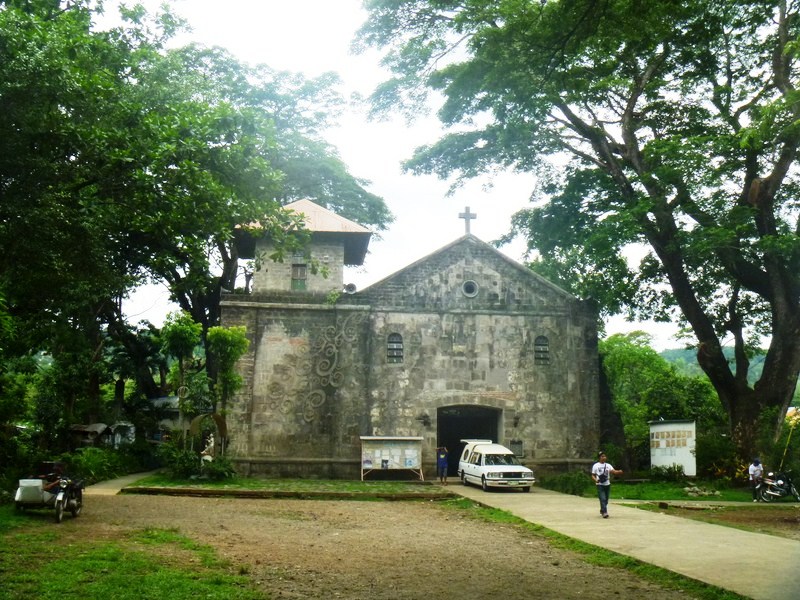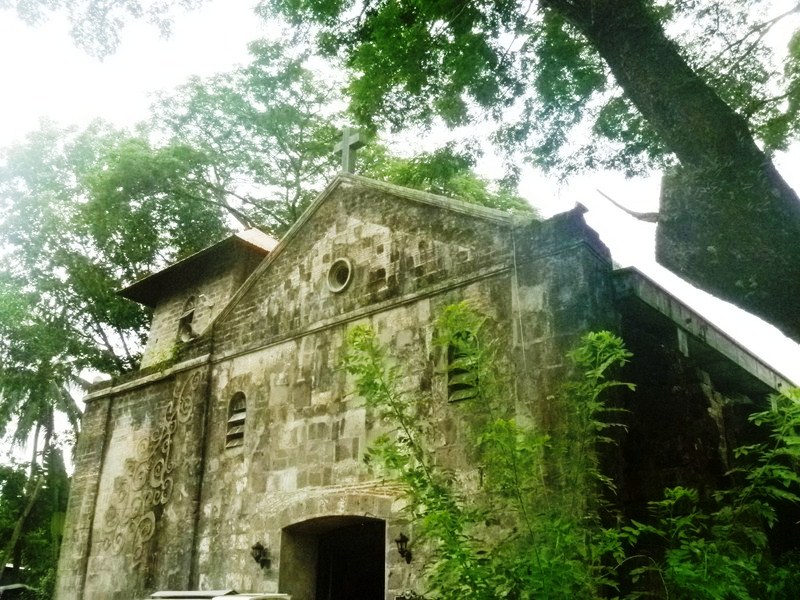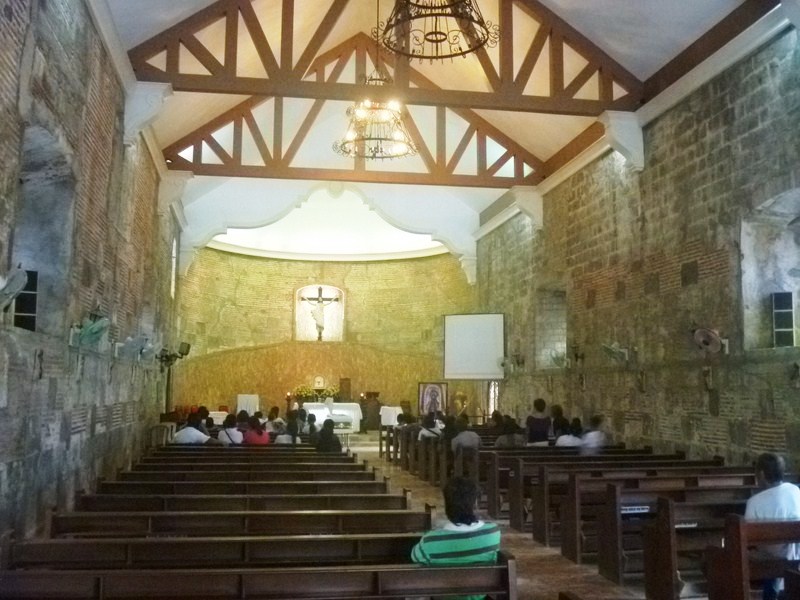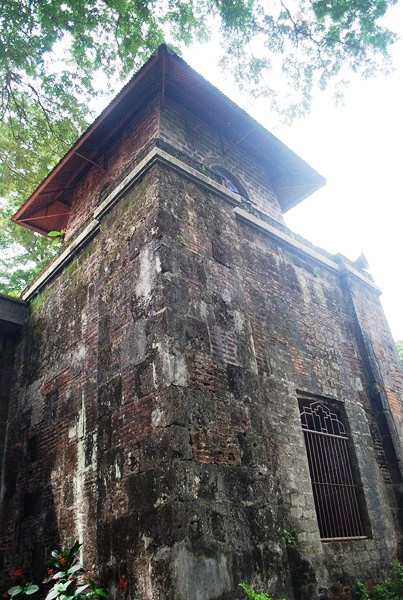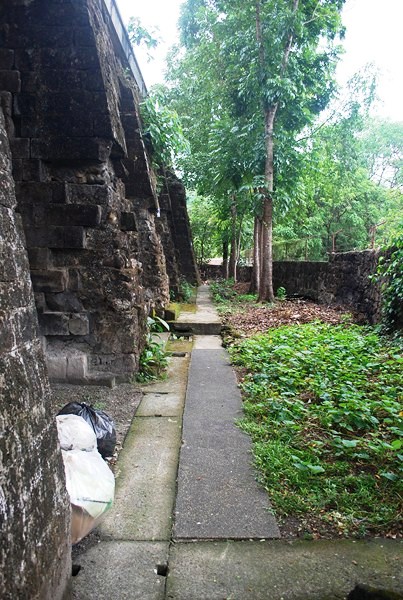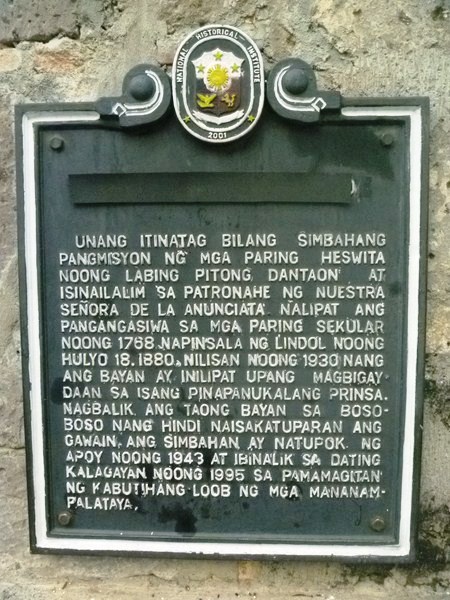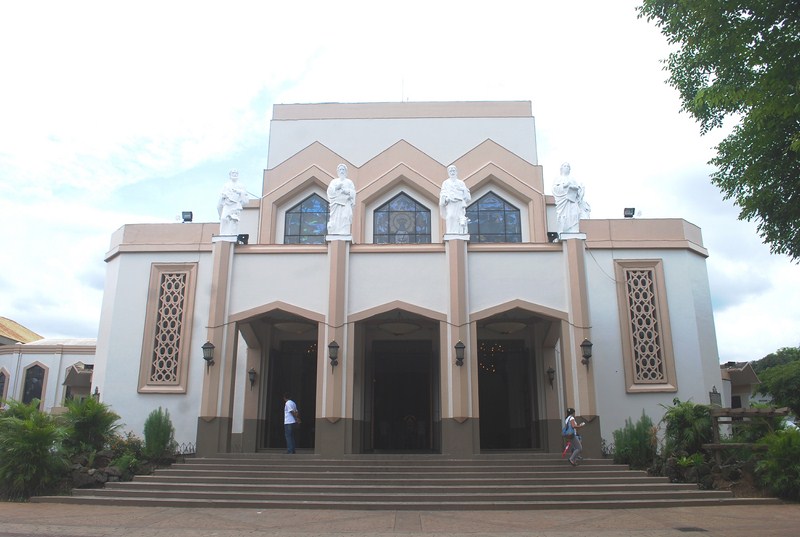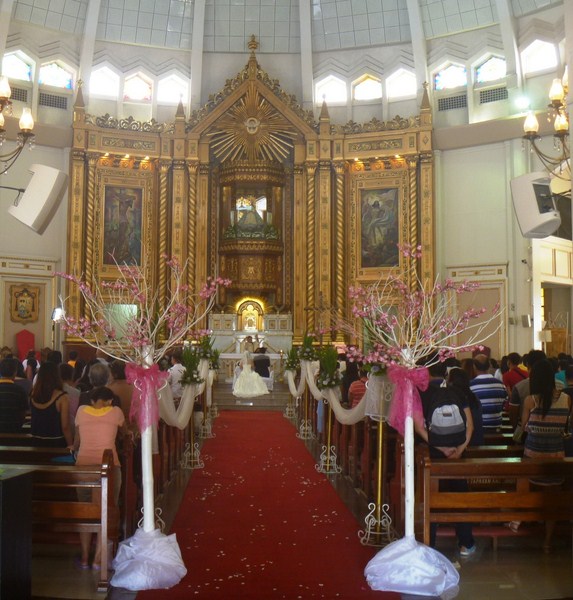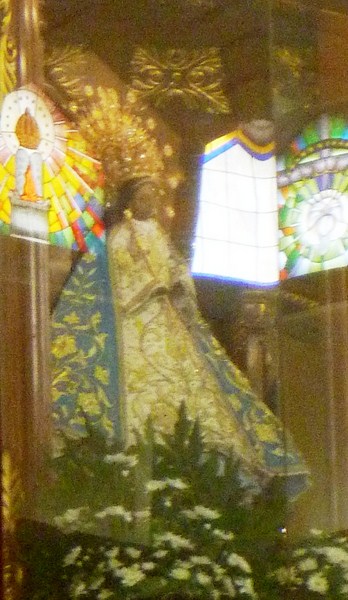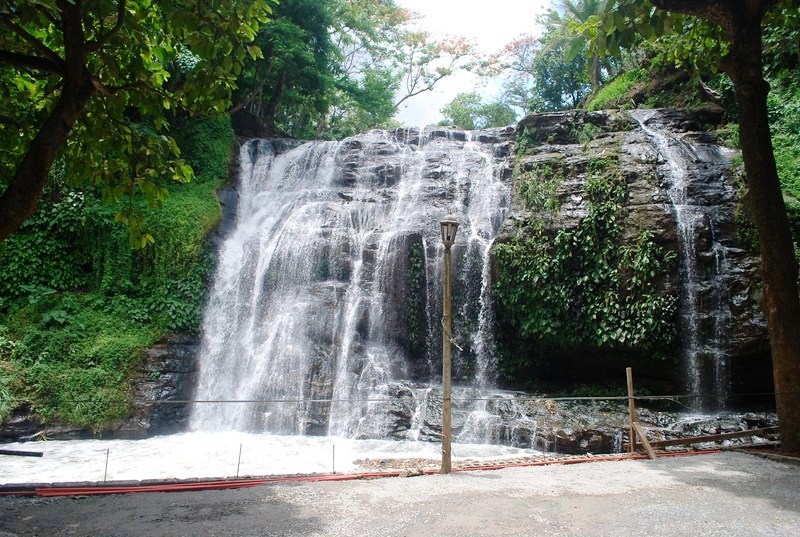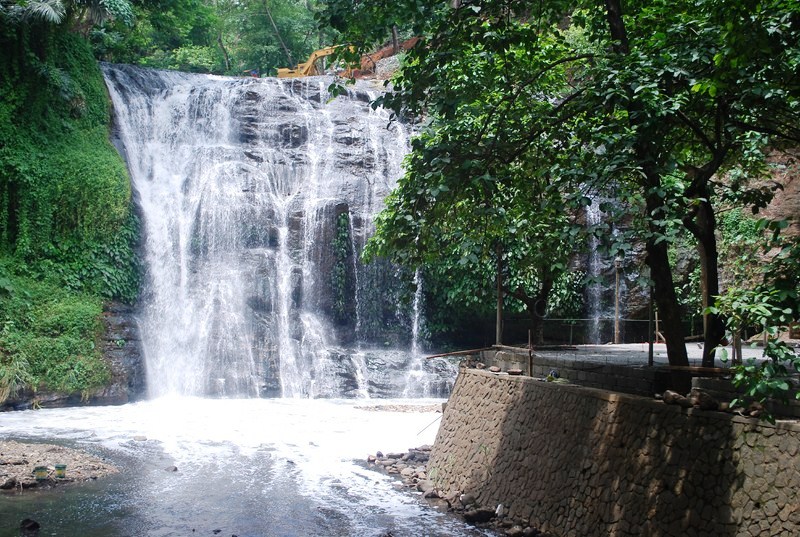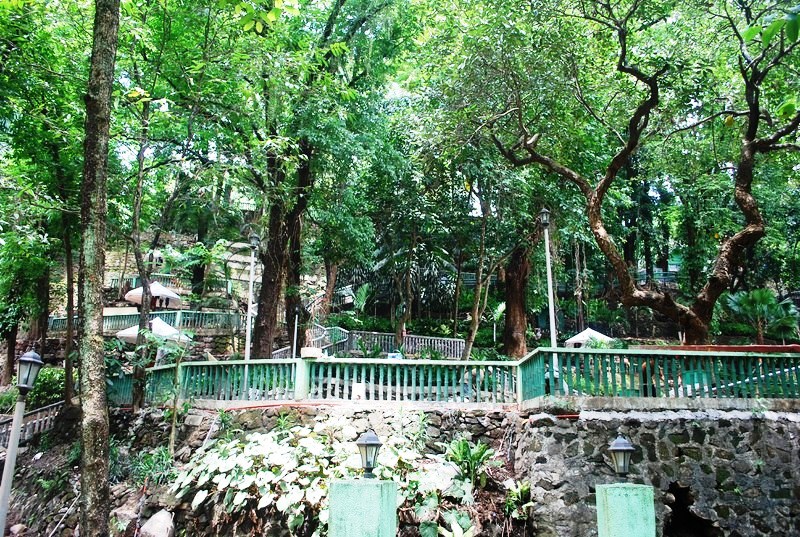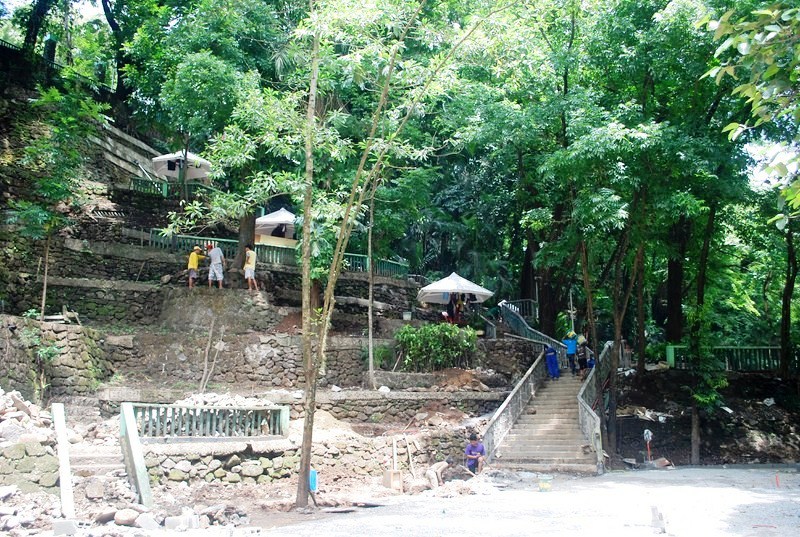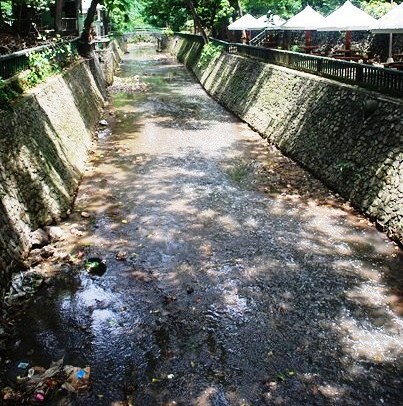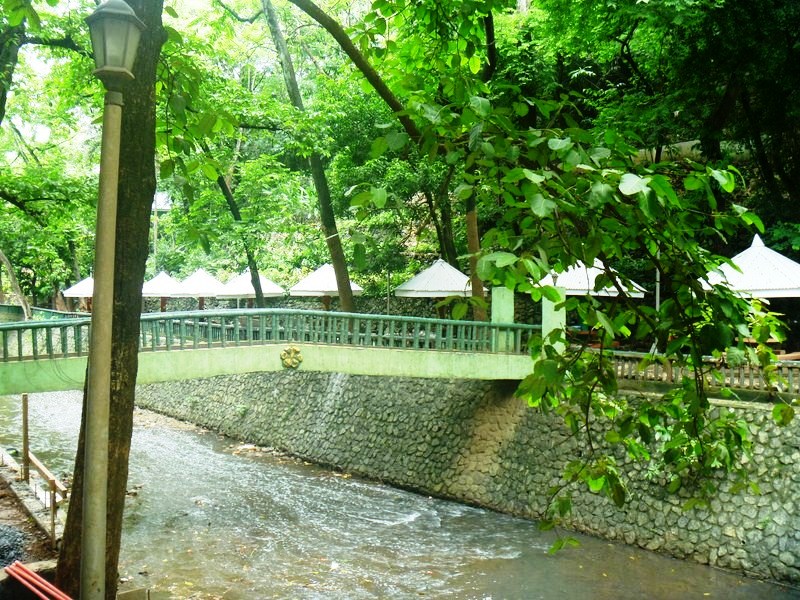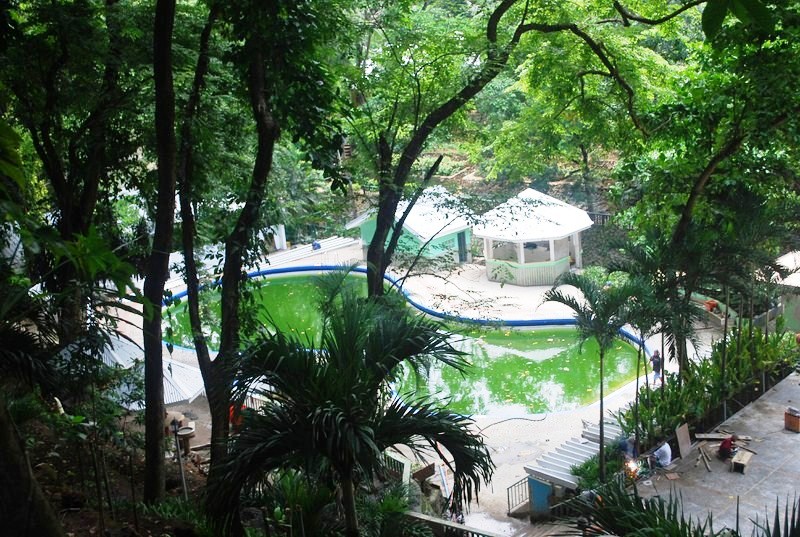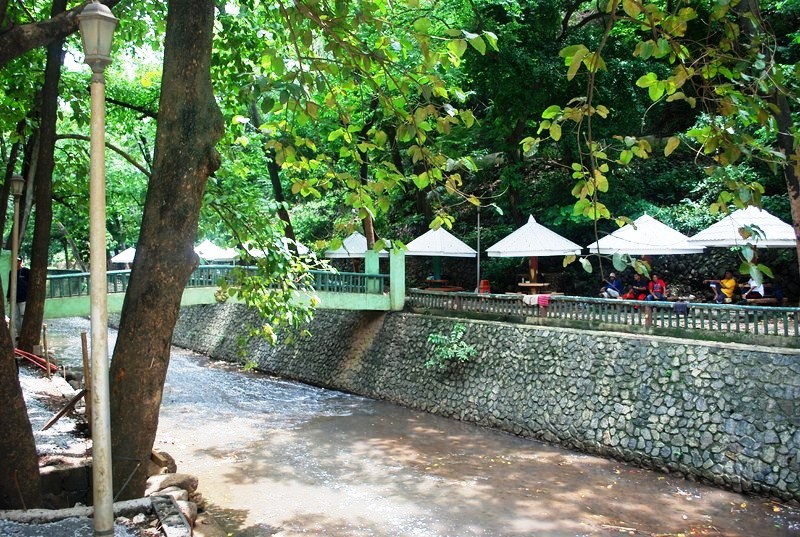After lunch at a Kentucky Fried Chicken outlet near the Antipolo Cathedral, Jandy and I returned to our Toyota Revo for the last leg of our Antipolo City tour – the Our Lady of Annunciation Church, the first Catholic church built in Antipolo. The church isn’t easy to find as it is located almost outside Antipolo, on the fringe just before getting to Tanay. We found our way there via the Marcos Highway (and asking for directions).
The stone and brick church was constructed by the Jesuits in 1700 under the patronage of Our Lady of Annunciation (Nuestra Señora de la Anunciata). In 1768, when the Jesuits were expelled, its management was transferred to Recollect priests. The church was destroyed during the July 18, 1880 earthquake. Since then, the population started dwindling and, as it did not seem important to rebuild the church, it was left in ruins.
In 1930, it was totally abandoned when the townspeople were ordered moved to another location to give way for the construction of a proposed dam that would flood the mountain valley of Boso-Boso. When the project didn’t prosper (due to the discovery of an earthquake fault line), the people slowly came back.
In 1943, during World War II, what remained of the church was destroyed by fire by the Japanese. In 1995, it was again restored, with the help of the townspeople, to its original design.
The present reconstructed church has a simple, single level facade with a centrally located main entrance flanked by two small, semicircular arched windows. Above it is a triangular pediment with a centrally located oculus. On the church’s left is a square bell tower. The side walls are supported by buttresses. Its interior reveal traces of its brick construction.
Our Lady of Annunciation Church: Sitio Old Boso-Boso, Brgy. San Jose, Antipolo City, Rizal.
How To Get There: From the Masinag/Sumulong intersection, ride a jeepney along Marcos Highway. Upon seeing the Boso-Boso Highlands Resort on the left side, it is a further 2 kms. to dirt road on the left marked with a big metal archway (“Old Boso-Boso, Brgy. San Jose, Antipolo City”). Here, take a 2-km. tricycle ride to the church located on your left.

